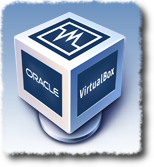 Citrix Profile Management (conosciuto come Citrix User Profile Manager) è un componente fondamentale di un ambiente XenApp e XenDesktop: il profilo utente viene catturato ed estratto dal desktop flexcast o dall’applicazione pubblicata e viene salvato in una share di rete per “girare” insieme all’utente tra le varie sessioni server/desktop virtuali.
Citrix Profile Management (conosciuto come Citrix User Profile Manager) è un componente fondamentale di un ambiente XenApp e XenDesktop: il profilo utente viene catturato ed estratto dal desktop flexcast o dall’applicazione pubblicata e viene salvato in una share di rete per “girare” insieme all’utente tra le varie sessioni server/desktop virtuali.
La documentazione sull‘eDoc di Citrix ci aiuta a configurare correttamente la security a livello di filesystem NTFS per mettere al sicuro i possibili dati sensibili, vediamo come:
Read the rest of this entry »
Tags:
$,
3.2,
4.0,
ADM,
automaticamente,
Citrix,
citrix profile management,
Citrix Systems,
Citrix XenApp,
configurazione,
Management,
roaming profiles,
share,
upm,
user profile manager,
username,
utente,
xendesktop Category:
Provisioning Services,
XenApp,
XenClient,
XenDesktop
 Dopo una prima fase di beta-testing conclusa con successo, è stata rilasciata la versione 3.2.0 della piattaforma di monitoraggio Zenoss Core.
Dopo una prima fase di beta-testing conclusa con successo, è stata rilasciata la versione 3.2.0 della piattaforma di monitoraggio Zenoss Core.
Vediamo insieme quali sono le novità:
Read the rest of this entry »
 E’ disponibile la nuova major-release di WordPress che porta la versione a 3.2.
E’ disponibile la nuova major-release di WordPress che porta la versione a 3.2.
Vediamo insieme quali sono le novità:
Read the rest of this entry »
 Nuovo aggiornamento del componente di gestione profili Citrix Profile Management (presente su alcune versioni di XenApp e XenDesktop) che risolve numerosi bug e porta la versione alla 3.2.
Nuovo aggiornamento del componente di gestione profili Citrix Profile Management (presente su alcune versioni di XenApp e XenDesktop) che risolve numerosi bug e porta la versione alla 3.2.
Vediamo insieme la lista dei problemi risolti:
Read the rest of this entry »
Tags:
3.2,
centralizzati,
Citrix Systems,
Citrix XenApp,
CTX126527,
desktop virtualization,
gestione profili,
profile management,
roaming profile,
XenApp,
xendesktop Category:
XenApp,
XenDesktop
 Finalmente è uscita la major update del prodotto di virtualizzazione per desktop di Oracle, VirtualBox 3.2.
Finalmente è uscita la major update del prodotto di virtualizzazione per desktop di Oracle, VirtualBox 3.2.
Nella nuova release troviamo nuove funzionalità e bugfix che affliggevano la precedente versione.
Da adesso VirtualBox prende ufficialmente il nome di Oracle VM VirtualBox (come saprete SUN è stata acquisita da Oracle il 20 aprile 2009)
Vediamo cosa c’è di nuovo (changelog):
- Experimental support for Mac OS X guests
- Memory ballooning to dynamically in- or decrease the amount of RAM used by a VM (64-bit hosts only)
- Page Fusion automatically de-duplicates RAM when running similar VMs thereby increasing capacity. Currently supported for Windows guests on 64-bit hosts
- CPU hot-plugging for Linux (hot-add and hot-remove) and certain Windows guests (hot-add only)
- New Hypervisor features: with both VT-x/AMD-V on 64-bit hosts, using large pages can improve performance; also, on VT-x, unrestricted guest execution is now supported (if nested paging is enabled with VT-x, real mode and protected mode without paging code runs faster, which mainly speeds up guest OS booting)
- Support for deleting snapshots while the VM is running
- Support for multi-monitor guest setups in the GUI for Windows guests
- USB tablet/keyboard emulation for improved user experience if no Guest Additions are available
- LsiLogic SAS controller emulation
- RDP video acceleration
- NAT engine configuration via API and VBoxManage
- Use of host I/O cache is now configurable
- Guest Additions: added support for executing guest applications from the host system (replaces the automatic system presimparation feature)
- OVF: enhanced OVF support with custom namespace to preserve settings that are not part of the base OVF standard
Read the rest of this entry »
Tags:
3.2,
64 bit,
amd-v,
API,
CoreAudio,
CPU,
disponibile,
engine configuration,
experience,
experimental support,
Fedora,
free,
gratis,
guest applications,
guest os,
host system,
Input/output,
keyboard emulation,
Linux,
linux solaris,
logons,
Mac OS,
Mac OS X,
memory,
Microsoft Windows,
opensource,
Operating system,
oracle,
Oracle VM VirtualBox,
os name,
os type,
PAM,
pam module,
Python,
rdp,
real mode,
sun,
tablet,
tablet keyboard,
VBoxManage,
video acceleration,
virtualbox,
virtualizzaizone desktop,
vm,
vms Category:
Virtualbox
 Citrix Profile Management (conosciuto come Citrix User Profile Manager) è un componente fondamentale di un ambiente XenApp e XenDesktop: il profilo utente viene catturato ed estratto dal desktop flexcast o dall’applicazione pubblicata e viene salvato in una share di rete per “girare” insieme all’utente tra le varie sessioni server/desktop virtuali.
Citrix Profile Management (conosciuto come Citrix User Profile Manager) è un componente fondamentale di un ambiente XenApp e XenDesktop: il profilo utente viene catturato ed estratto dal desktop flexcast o dall’applicazione pubblicata e viene salvato in una share di rete per “girare” insieme all’utente tra le varie sessioni server/desktop virtuali.


